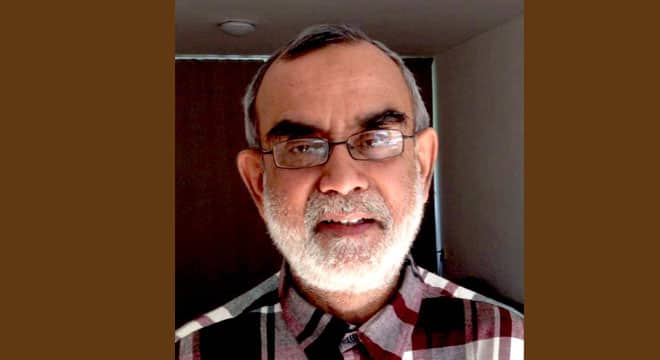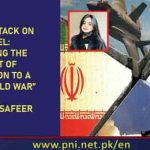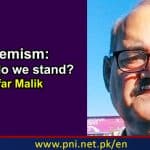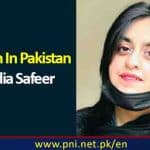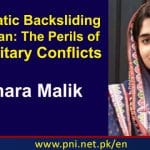Abid Malik Managing Director of Indus Venture recently made an interesting remark on Pakistan’s success in receiving IMF loan. He said that “This is not a moment to celebrate but a time to start worrying about how a jobless and cashless generation is going to pay off this ballooning debt in the coming decades while wealth hoarders are already thinking about their cut in the loan. According to a 2021 United Nations’ report, powerful Pakistani elite groups including feudal landlords, the corporate sector and the political class consume more than $17 billion of the country’s precious economy each year, leaving lower classes in debt and destitution. The rich in Pakistan are sitting on $1.4 trillion in rural/urban real estate, stocks, gold, foreign currencies, and fat overseas bank balances. A 4% wealth tax can generate enough revenues to pay off this country’s debt within 5 years only if the government has enough courage to go after their proud sponsors among tax dodgers and money-launderers” When I shared this idea with my friend Zubair Kahn, former commerce minister of Pakistan and at one time an advisor to Imran Khan his response was that “ There is legislation. Fiscal responsibility and debt limitation act 2005, constraining government to keep debt/GDP ratio below 65%. But they are all violating with impunity. I have a petition in the SC, accepted and numbered but not heard. It’s a lost battle. They lure government spending for corrupt gains, political power leading to financial gains is too high. Even PTI. With weak institutions, corrupted and politicized, lack of merit. Pakistan is a failed state”.
.There are other indicators of state failure also. The informal sector is 90 percent of Pakistan’s economy and provides, jobs, shelters, and basic services to the poor. The size of indigenous philanthropy is double the size of the government’s budget for the social sector in Pakistan. Majority of our people depend on community based institutions for their survival. This situation depicts that the market and government cannot solve our key problems without community engagement . Our honest professionals need to learn from the poor and strengthen civil society institutions to fill the vacuum created by the lack of leadership in the formal sector. The first thing that a technical professional needs to know is how to establish a meaningful relationship with the community s/he wants to serve. Professionals and communities possess two different types of knowledge, technical and social. Some leading people in public service have given us very valuable insights on how to integrate expert knowledge which is technical with community knowledge which is social.
Arthur Ashe gave a very profound statement about community workers who want to serve the people by saying ‘start where you are, use what you have, do what you can’. The starting point for any technical expert is to map out the resources that community has; physical infrastructure, technical skills, land and other assets. But before this mapping work an important first step is to know what does the community want , how it wants to achieve it and what are the barriers in its way. Ernesto Sirolli a renowned expert in social entrepreneurship said very clearly and bluntly how to accomplish this task. He said, “ if you want to help, shut up and listen”. Listening is an art that does not naturally come to everyone. We are better in speaking than listening. South Asia’s guru in rural development and poverty alleviation Akhter Hameed Khan invented a powerful tool for listening to and consulting with the community. It is called the Diagnostic Dialogue. This tool was used for poverty alleviation in the poverty stricken communities living in the most harsh terrain in the world, the mountain communities of Himalayas, Karakoram and Hindukush mountain ranges. In ten years time community development plans based on the use of this tool doubled the income of 100,000 households. This was unprecedented. United Nations Development Program noticed it and provided grant funding to expand this approach to entire South Asia, a region with the highest concentration of the poor in the world. Thus a new program South Asia Poverty Alleviation Program (SAPAP) was born focusing on women. It created largest number of women’s self help groups (SHGs) in the world.
Government and private sector programs based on time based targets and program templates cannot achieve the results that accrue due to use of Diagnostic Dialogue for two reasons. One, there is no flexibility in the template based programs to make changes to accommodate community concerns, and two, these programs cannot patiently wait for community response due to time bound targets set in their plans. So, for long term changes in practices as well as policies civil society organizations are the best suited partners. Community engagement and consensus building both at community and government level require patience, and long time commitment. Civil society organizations can work effectively if they have well developed tools like diagnostic dialogue to build consensus. Diagnostic Dialogue consists of three dialogues. In the first dialogue the development assistance expert asks the community if they want to alleviate poverty in their area. If the community agrees, then it is asked to fulfil certain preconditions to qualify for the supports. In other words the community earns the support through collective action and a reciprocal relationship is established between the community and the technical professionals. The community is asked to organize and hold meetings regularly, select office bearers through consensus to avoid future inner conflicts, save regularly, and identify one intervention that will alleviate poverty of most of the households in the community.
Three months after the dialogue community presents evidence of honouring its commitments in a meeting with the development expert. Then the second dialogue is started to prepare a feasibility for the project identified by the community as the most suitable project for poverty alleviation. Dr. Khan warned about one thing here. He said that community can come up with two types of solutions, their dreams and things that can be achieved within the available means. Professional experts should work on the solution that can be achieved within the available means. When community and development expert agree on the technical solution then third dialogue is held. In the third dialogue grant funds in the form of a cheque are presented to the office bearers of the community organization in a community meeting and community is told to keep track of the money and monitor the project progress. It is their project and they take the responsibility for its implementation.
To know more please read
Social Transformation in Pakistan: The Art and Science of Linking with the ‘Other’. The book is available on Amazon and it has been published by The Knowledge Executive.


